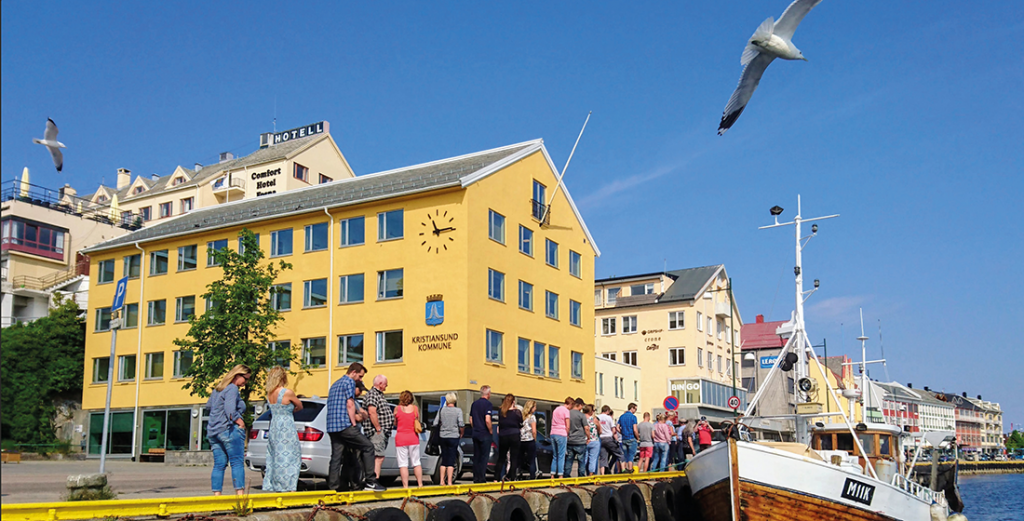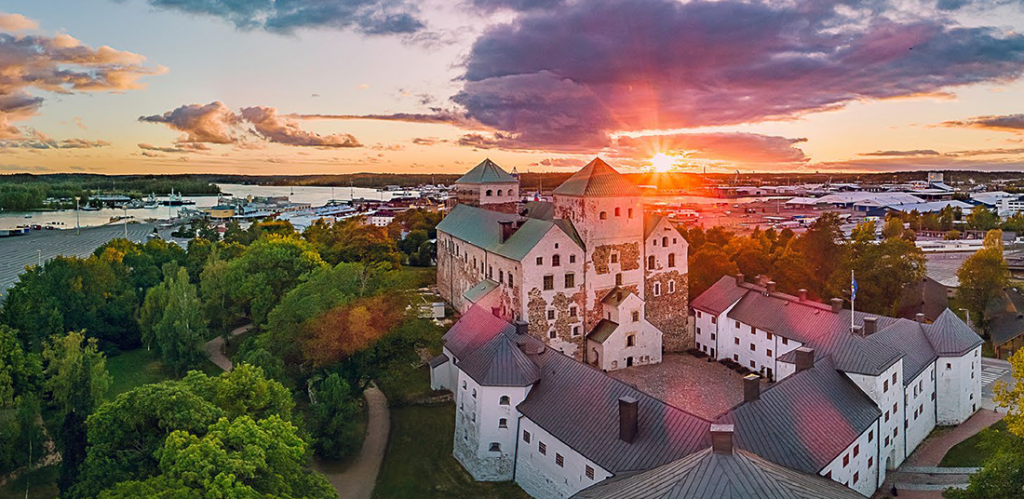Monitoring and evaluation: How to measure progress in the work with the SDGs at the local level? (all SDGs)
Local and regional authorities in the Nordic countries are active drivers in implementing the 2030 Agenda. Their work is of great importance, as it is estimated that up to 65% of the goals cannot be reached without the involvement of subnational actors. Nonetheless, measuring progress in the work with the SDGs remains a challenge, since indicators and data are not always available at the local level. During the last years, many new initiatives and projects have emerged at the national, Nordic and European level to support municipalities and regions in measuring progress and identifying areas of weakness and strength in the local work with the SDGs.
For the full report about the webinar series, read Nordregio's "Agenda 2030: How to reach the goals and measure success at the local level" publication.
How can progress in implementing the SDGs be measured within an existing local governance system?
Kristiansund (NO): ca. 24,000 inhabitants

Kristiansund started to work with the 2030 Agenda in 2016, and the city became a frontrunner in Norway in including the SDGs into key steering documents. The local authority currently works with 11 of the 17 SDGs and has added two local goals to the set. In their work with the SDGs, the local authority has placed a strong emphasis on measuring progress and evaluating the impact of different activities and programmes. The so-called DIKAR model, which was developed in India in the 1990s, guides Kristiansund’s work in measuring impact and progress. The letters in the model name stand for data – information – knowledge – activity – results. Kristiansund uses the model in reverse.
First, when the local political leadership decides to emphasise work in a specific local competence area, expected results are defined. The local authority then identifies key performance indicators (KPIs) to measure progress towards achieving these results. Kristiansund uses two main sources to choose KPIs for the local work: key steering documents and taxonomies. Key steering documents and plans, such as regional area plans, city plans, and professional plans, define a number of goals and targets for the municipality. All of these plans are assessed by Kristiansund’s development unit which challenges the plan builders to define measurable units for all defined goals and targets. Thanks to this effort, all plans that are used in Kristiansund have measurable goals. In addition to steering documents and plans, Kristiansund also uses taxonomy models to choose KPIs for their local context. Such taxonomies include, most notably, the SDGs with their targets and indicators. Kristiansund is also part of the United 4 Smart Sustainable Cities (U4SSC) network. U4SSC is a UN initiative to achieve SDG 11 on sustainable cities and communities. This network has developed a set of 92 KPIs to measure social, economic, and environmental sustainability in a city context. Finally, Kristiansund uses national indicators that are provided by Statistics Norway, the national statistical institute. Both sources – local plans and existing taxonomy models – provide Kristiansund with a core set of KPIs that are used to measure progress in the local work.
The local authority then decides on the activities or programmes that shall be implemented to move the KPI in the desired direction. In order to decide which activities and programmes will have the desired effects, the local municipality builds on existing knowledge from its own organisation, which may consist of qualitative information or quantitative data. Surveys, workshops and interviews may be conducted to fill potential data and information gaps. This process – building knowledge based on data and information, and defining activities, expected results and KPIs – is implemented for every goal and target that the city aims to achieve. It helps to visualise how each local programme and activity influences the progress towards reaching Kristiansund’s local goals and the SDGs.
The challenge to maintain motivation: Kristiansund uses a corporate governance system, Stratsys, to implement these different steps and follow up progress in their work. In Stratsys, Kristiansund’s local targets and SDG-related goals are treated like financials. Each goal is connected to a budget. Expenses, activities, and outcomes are reported and followed up on a monthly basis. Local politicians also receive monthly updates on how the municipality is progressing towards its goals. Stratsys allows every employee in the local authority to visualise and quantify how their personal effort has contributed towards reaching individual local targets or SDGs. This helps the local administration to keep focus and motivation.
How can a Voluntary Local Review be organised?
Turku (FI): ca. 194,000 inhabitants

Turku is one of the first cities in Europe that have carried out a Voluntary Local Review (VLR) to evaluate their work towards achieving the SDGs on a local level. VLRs are the subnational equivalent to Voluntary National Reviews (VNRs) and can be used by local authorities to evaluate their work towards achieving the SDGs. Turku’s work on their VLR started in 2019 after the inspiring examples of New York City and Helsinki.
Turku has an ambitious city strategy, entitled ‘Turku 2029’, which is the year when the city will celebrate its 800-year anniversary. With its strategy, Turku has committed to act in line with the SDGs in all its activities. The city aims to reform and grow in ecologically, socially, and economically sustainable ways, thus creating comprehensive and sustainable welfare for its residents. For example, Turku aims to be carbon neutral by 2029 and wants to be a pioneer in socially sustainable urban and regional development.
The VLR has been an important tool to benchmark Turku’s progress against the city strategy targets, to showcase local actions towards greater sustainability and to share their experience, nationally and internationally, in working with the SDGs. The review process has also helped with communicating the goals and measures of sustainable development both inside the local authority and to different interest groups. One of the goals of the VLR has been to increase cooperation and competence inside the local authority and to create a common vision for the city of Turku for sustainable development. Involving and engaging city residents and interest groups into working together to create sustainable future solutions has been of great importance in this process.
The challenge to secure engagement from the entire local administration: The Project Development Unit of Turku’s local administration was responsible for compiling the report (VLR-team). Specialists from the whole city organisation, from spearhead projects and from different local entities participated in writing and drafting the VLR. The Mayor was the owner of the process. This commitment helped to secure resources and engagement from all sectors of the administration. The Mayor’s management group, consisting of all local authorities’ division directors and directors of the groups and areas of responsibility, acted as the project steering group. Turku’s city council approved the principal messages and highlighted goals for the first VLR report in March 2020 and the whole report at its meeting in June 2020. Overall, 150 experts were engaged in the VLR process.
The VLR process took one year to complete and had four major phases:
1. Starting Phase: The process started when the Mayor of Turku decided to take part in the VLR process and to report the results to the United Nations’ High Level Political Forum (HLPF). During the starting phase, the VLR-team familiarised itself with the few already existing VLRs from other cities and with guidelines and handbooks on how such a review can be organised. Each division in the local administration appointed one reference person to support the VLR work. This provided the VLR-team with a strong mandate and facilitated the compilation of the report.
2. Planning Phase: During this phase, the purpose and scope of the VLR was defined. The city of Turku decided to address all 17 SDGs in its review. It was also decided that the review would evaluate the city strategy ‘Turku 2029’ against the SDGs. In addition, a few key strategic projects and the work of two strategic companies were evaluated in the review. During the planning phase, Turku also identified the key target groups for its VLR which included Turku’s citizens, organisations, businesses and international stakeholders such as other cities and the UN institutions. Finally, the budget, project duration and working steps of the VLR process were planned. This included decisions about which stakeholders were to be involved during the different stages of the project. The VLR-team planned the structure and layout of the report which provided good insights into how much material would have to be compiled for different sections of the review.
3. Collecting and Analysing Data Phase: During the third stage, the VLR-team analysed the degree to which different SDGs and targets are visible in the city strategy and assessed which SDG targets can be reviewed at local level. The team also identified indicators that could be used to measure city operations and progress towards the SDGs. After these preparatory steps, the VLR-team collected information and data in cooperation with experts from the city organisation. Questionnaires, workshops and interviews with leading officials in the administration and experts were also used to obtain missing pieces of information and to complement the available quantitative data. Finally, the collected data and information were analysed and areas of local strength and weakness with respect to the SDGs could be identified.
4. Finalisation Phase: During the last phase, the VLR-team, with help of the experts, drafted the text of the VLR report and visualised key data and trends. The VLR-team also planned how to communicate the review and its results and how to continue the work in the future. The city is planning to publish VLRs on an ongoing basis, with the next report planned for 2022.
Further reading: